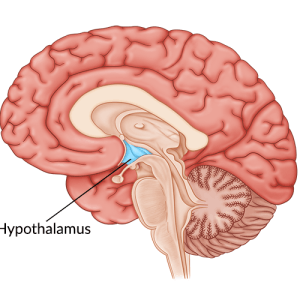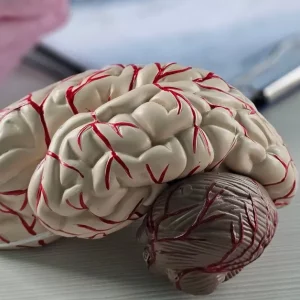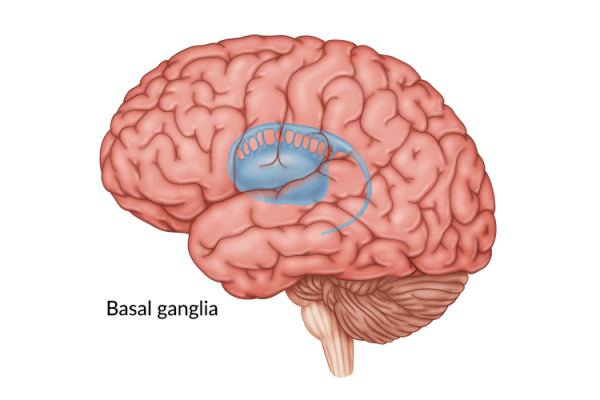The amygdala is an almond-shaped structure in the brain that is responsible for emotional and behavioral regulation, particularly the body’s response to fear. Damage to the amygdala can often be caused by stroke, traumatic brain injury, and other neurological conditions.
Individuals with amygdala damage may experience various emotional and behavioral effects such as impaired decision-making, hypervigilance, or anxiety, just to name a few. Fortunately, symptoms of amygdala damage can improve with a combination of treatments, including medication and therapy.
This article will discuss how damage to the amygdala can affect emotions and behavior, and effective treatment options to promote recovery.
Use the jump links below to navigate through the article:
- What is the function of the amygdala?
- Conditions that can affect the amygdala
- Symptoms of amygdala damage
- How to effectively treat damage to the amygdala
What Is the Function of the Amygdala?
The amygdala is a small, almond-shaped collection of neurons located deep inside the temporal lobe. It is a crucial part of the limbic system, a group of structures involved with emotional responses and behavior. The amygdala is responsible for several functions, such as processing fear and other related emotions.
When we are exposed to a fearful or dangerous stimulus, this information is sent directly to the amygdala. The amygdala then passes those signals on to other areas of the brain, such as the hypothalamus, which then activates the body’s “flight or fight” response depending on the situation. The cerebral cortex, particularly the frontal lobe, is another area of the brain that works with the amygdala to regulate emotions and behaviors.
The amygdala also contributes to higher cognitive functions such as:
- Forming & storing long-term memories
- Learning new information
- Decision-making skills
When the amygdala sustains damage, it can impair these functions and interfere with emotional and behavioral processes. As a result, individuals may experience problems with memory, decision-making, and other behavioral skills.
Health Conditions that Can Affect the Amygdala
Damage to the amygdala can be caused by various conditions, including neurological injuries like traumatic brain injury and stroke. Because the amygdala is located in the temporal lobe, injury to this area caused by a TBI, stroke, or seizure can also result in amygdala damage.
In fact, temporal lobe epilepsy is a relatively common cause of damage to the amygdala. Brain inflammation, specifically limbic encephalitis, can also lead to amygdala damage on both sides of the brain.
Alzheimer’s disease may also cause atrophy (shrinking) of the amygdala and the hippocampus, two structures of the brain associated with memory and emotional function. This helps to explain why memory problems and personality changes often occur in people with Alzheimer’s.
When these health conditions affect the amygdala, it can lead to mood swings, irritability, and even aggression. It can also lead to memory problems and changes in emotions and behavior. It’s important to seek medical attention if any of these health conditions and/or other symptoms of amygdala damage are present.
Symptoms of Amygdala Damage
Damage to the amygdala can cause a variety of symptoms, most often emotional and behavioral. Individuals may experience irritability, confusion, and a variety of strong emotions. Symptoms of amygdala damage can be complex and may require a combination of treatments. Therefore it’s important to consult with a medical provider if any of these symptoms appear after a brain injury.
Some of the most common symptoms of amygdala damage include:
- Amygdala hijack: is a term used when the amygdala becomes overwhelmed by stress, “hijacking” the logical and rational centers of the brain. Sensory input passes by the amygdala before being transmitted to the more rational areas of the brain, such as the prefrontal cortex. As such, the amygdala can prompt an extreme reaction to a stressful situation, before the higher-level areas of the brain can even “think” about it. When this occurs, the brain releases two stress hormones, cortisol and adrenaline, which help prepare the body for “fight or flight.” As a result, individuals may experience a rapid heartbeat, sweaty palms, goosebumps on the skin, dilated pupils, increased blood flow to the muscles, and increased glucose (blood sugar) levels.
- Memory Loss: occurs when the amygdala, which is responsible for encoding the emotional aspect of memory, and the hippocampus, which encodes the context, cannot efficiently work together. As a result, individuals may struggle to retain information and experience long and short-term memory loss.
- Impaired Decision-Making: can be caused by damage to the amygdala and/or orbitofrontal cortex. When decision-making becomes impaired, individuals may struggle to make safe and rational decisions. Studies show that individuals are more likely to make riskier decisions when the amygdala does not trigger somatic responses or reactions to external stimuli like fear. Impaired decision-making can also cause impulsive behavior, which can sometimes put a survivor at risk for harm.
- Hypervigilance: may be caused by lesions on the amygdala. Individuals with hypervigilance may have a perceived fear of others. For example, some may become sensitive to certain facial expressions or words, which they may interpret as a possible sign of threat. This can cause feelings of anxiety and paranoia, however, unlike survivors with paranoia, hypervigilant individuals typically understand that the threat may not be real or true.
- Anxiety and/or Depression: are two common secondary effects of a TBI that can occur after damage to the amygdala, a key component of emotion regulation. Studies show that depression is associated with increased activity of the amygdala and decreased activity of the dorsolateral prefrontal cortex, which is responsible for executive control. Hyperactivation of the amygdala is also associated with other mental health conditions, such as post-traumatic stress disorder (PTSD), social anxiety disorders, bipolar disorder, and/or panic attacks.
Individuals with amygdala damage may also experience difficulty with emotional regulation, primarily in regards to fear. For example, in dangerous situations, individuals may show an abnormal fear response.
Furthermore, they may have difficulties recognizing when those around them are experiencing fear. This can raise concern for both the survivor and their loved one. Fortunately, with the proper treatment, survivors can work toward regulating their emotions and behavior after brain damage.
How to Treat Amygdala Damage
Damage to the amygdala may require a combination of treatments, depending on the root cause. To find safe and effective treatments for amygdala damage, it’s important to consult with a medical provider and follow their tips and guidelines. They may suggest making lifestyle changes and adapting healthier habits to help the amygdala heal after brain damage.
Some of the most effective treatments for amygdala damage may include:
- Psychotherapy: can help with impaired decision-making, impulsivity, and other emotional and behavioral symptoms of amygdala damage. Psychotherapy can help survivors learn different techniques to help them evaluate risks and make better, safer decisions.
- Mindfulness: is the practice of staying present, and often calm, in the moment. It can help reduce stress levels and depression caused by damage to the amygdala. Mindfulness can also increase the gray matter areas of the brain, which play a role in memory and emotional regulation.
- Deep Brain Stimulation: is a neurosurgical procedure that involves implanting electrodes in certain areas of the brain associated with movement and neurological disorders. Studies have shown that deep brain stimulation can help treat hypervigilance and other psychological and behavioral effects of amygdala damage. While it can be helpful, it’s important to note that deep brain stimulation is a highly invasive procedure that should only be utilized when all other options have been exhausted.
Certain medications may also help reduce hypervigilance and impulsivity caused by damage to the amygdala. However, medication may have unwanted side effects and may interfere with certain health conditions. Therefore, it’s important for every survivor to consult with a primary care physician to ensure medication is an appropriate treatment for their specific needs.
Understanding Damage to the Amygdala
Different structures of the brain typically control various functions of the body. The amygdala in particular controls the body’s response to fear and emotional and behavioral regulation. When the amygdala sustains damage, it can cause difficulty with memory processing, emotional reactions, and decision-making.
Fortunately, the effects of amygdala damage can be improved through rigorous training and therapy. A doctor or therapist can provide individuals with the most effective treatments for their specific condition and tips to promote recovery.
We hope this article helped you understand how damage to the amygdala can be improved.










